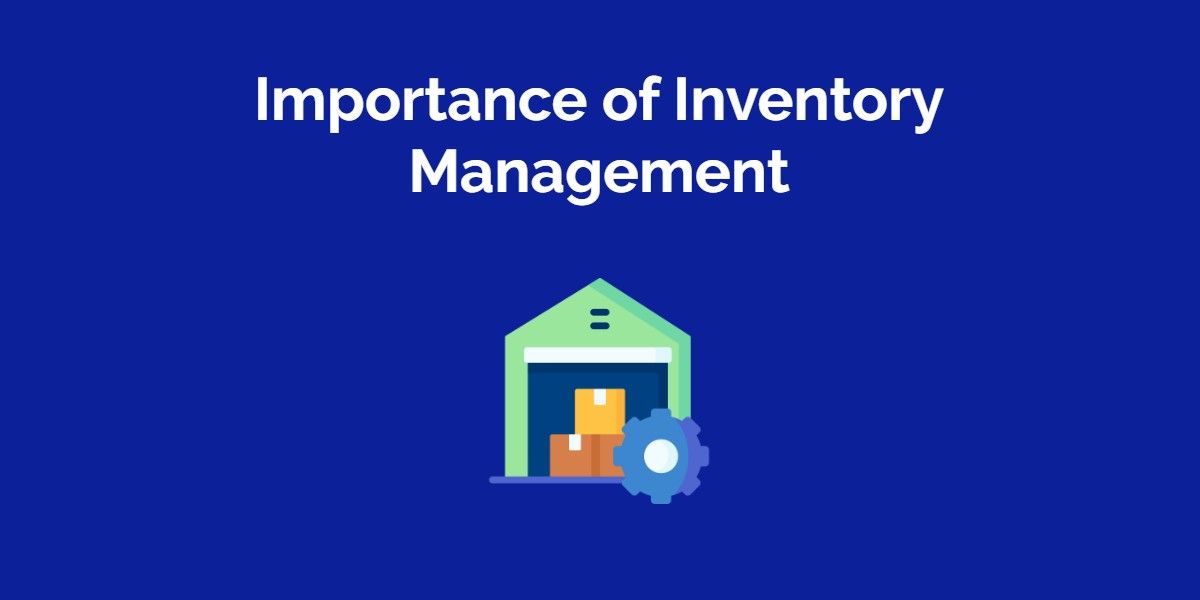How to Start a Stationery Business
Are you passionate about stationery and dream of turning that passion into a profitable business?
Starting a stationery business can be an exciting venture that allows you to combine your creativity with entrepreneurship.
Whether you're interested in selling unique handmade cards, personalized journals, or trendy office supplies, this article will guide you through the essential steps to start your own successful stationery business.

Table of content
-
Overview About How to Start a Stationery Business
- Research and Planning Your Stationery Business
- Defining Your Target Market
- Choosing Your Stationery Product Range
- Setting Up Your Stationery Business
- Establishing an Online Presence
- Creating a Brand Identity
- Sourcing Stationery Suppliers
- Pricing and Profitability
- Marketing and Promotion
- Managing Inventory
- Providing Exceptional Customer Service
- Staying Updated with Stationery Trends
- Financial Considerations
- FAQs About How to Start a Stationery Business
Overview About How to Start a Stationery Business
Starting any business requires careful planning and preparation. The same applies to a stationery business.
You need to conduct thorough research, define your target market, choose your product range, set up your business, establish an online presence, and implement effective marketing strategies. Let's dive into the step-by-step process of starting a stationery business.
Research and Planning Your Stationery Business
Before diving headfirst into your stationery business, take the time to conduct thorough research and create a solid business plan.
This initial step will help you gain a deeper understanding of the market, identify your competitors, and determine your unique selling proposition. Consider the following:
1. Market Research
Conduct market research to identify potential customers, their preferences, and their buying behavior. Look for gaps in the market that your stationery business can fill. Explore the latest stationery trends and identify opportunities for differentiation.
2. Competitive Analysis
Analyze your competitors, both local and online. Study their product offerings, pricing, branding, and marketing strategies. Identify areas where you can differentiate your business and offer unique value to customers.
3. Business Plan
Create a comprehensive business plan that outlines your mission, vision, target market, product range, marketing strategies, and financial projections. A well-defined plan will serve as a roadmap for your business and help secure funding if needed.
Defining Your Target Market

Understanding your target market is crucial for tailoring your product range and marketing efforts effectively. Consider the following factors when defining your target market:
1. Demographics
Identify the demographics of your ideal customers, such as age, gender, location, occupation, and income level. This information will guide your product selection and marketing messages.
2. Psychographics
Dive deeper into your target customers' psychographics, including their interests, hobbies, values, and lifestyle. This knowledge will help you curate stationery products that resonate with their preferences.
3. Unique Selling Proposition (USP)
Determine your USP - what sets your stationery business apart from competitors. It could be offering eco-friendly products, personalized stationery, or exclusive designs. Your USP will attract and retain customers.
Choosing Your Stationery Product Range

Selecting the right product range is crucial for the success of your stationery business. Consider the following steps:
1. Niche Selection
Identify a specific niche within the stationery market that aligns with your passion and expertise. It could be wedding stationery, artistic journals, office supplies, or a combination of different niches.
2. Quality and Variety
Source high-quality stationery products that meet your customers' expectations. Offer a diverse range of products to cater to different preferences and budgets, including notebooks, pens, stickers, cards, and accessories.
3. Customization Options
Consider offering customization options to appeal to customers seeking personalized stationery. This could include monogramming, custom designs, or special printing services.
Setting Up Your Stationery Business
Now that you have a clear plan and product selection, it's time to set up your stationery business. Follow these steps:
1. Legal Structure
Decide on the legal structure of your business, such as sole proprietorship, partnership, or limited liability company (LLC). Consult with a legal professional to determine the best option for your specific needs.
2. Register Your Business
Register your business name and obtain the necessary permits and licenses required in your jurisdiction. This step ensures that your stationery business operates legally.
3. Financial Management
Set up a separate business bank account to track your finances accurately. Use accounting software to manage invoices, expenses, and inventory. Consider consulting with an accountant to ensure proper financial management.
Establishing an Online Presence

In today's digital age, having a strong online presence is vital for any business. Here's how you can establish an online presence for your stationery business:
1. E-Commerce Website
Create an e-commerce website where customers can browse and purchase your stationery products online. Ensure that your website is user-friendly, visually appealing, and optimized for mobile devices.
2. Online Marketplaces
Consider selling your stationery products on popular online marketplaces such as Etsy, Amazon Handmade, or eBay. These platforms provide access to a large customer base and offer built-in marketing tools.
3. Social Media
Utilize social media platforms such as Instagram, Facebook, and Pinterest to showcase your stationery products, engage with customers, and build a loyal following.
Post visually appealing content, run giveaways, and collaborate with influencers to increase your brand visibility.
Creating a Brand Identity

Building a strong brand identity will differentiate your stationery business and create a memorable impression on customers. Consider the following elements:
1. Brand Name and Logo
Choose a unique and catchy brand name that reflects your stationery business. Design a professional logo that represents your brand's personality and resonates with your target market.
2. Visual Branding
Develop a cohesive visual identity through consistent color schemes, fonts, and design elements across your website, packaging, and marketing materials. This creates a recognizable brand image.
3. Brand Voice
Define your brand's tone and voice. Use an authentic and relatable language that resonates with your target market. Incorporate storytelling to create an emotional connection with your customers.
Sourcing Stationery Suppliers

Finding reliable suppliers is essential for maintaining a consistent supply of high-quality stationery products. Consider the following:
1. Wholesale Suppliers
Research and connect with wholesale suppliers who offer a wide range of stationery products. Evaluate their product quality, pricing, shipping policies, and customer reviews before making a partnership.
2. Handmade and Local Suppliers
Consider sourcing unique stationery products from local artisans and crafters. This not only supports small businesses but also offers exclusive items that set your business apart.
Pricing and Profitability
Determining the right pricing strategy is crucial for achieving profitability and attracting customers. Follow these steps:
1. Cost Analysis
Calculate all the costs involved in running your stationery business, including product costs, packaging materials, shipping, marketing expenses, and overheads. This analysis will help you set profitable pricing.
2. Competitive Pricing
Research your competitors' pricing to ensure that your prices are competitive within the market. Consider factors such as product quality, uniqueness, and value-added services.
3. Profit Margin
Set a reasonable profit margin that allows you to cover your costs, invest in business growth, and generate sustainable profits. Striking a balance between affordability and profitability is key.
Marketing and Promotion

Effective marketing strategies will help you reach your target audience and generate sales. Consider the following marketing tactics:
1. Content Marketing
Create valuable and engaging content related to stationery, such as blog posts, tutorials, or inspirational social media content. Establish yourself as an authority in the industry and attract organic traffic to your website.
2. Influencer Collaborations
Collaborate with influencers or bloggers who have a strong presence in the stationery or creative community. They can showcase your products to their audience and generate brand awareness.
3. Email Marketing
Build an email list and regularly send newsletters to your subscribers. Provide exclusive offers, updates on new product launches, and useful tips related to stationery. This keeps your brand top of mind for potential customers.
Managing Inventory

Efficient inventory management is crucial to avoid stockouts or excess inventory. Consider the following tips:
1. Inventory Tracking System
Implement an inventory management system that allows you to track product quantities, sales, and restocking needs. This helps you maintain optimal inventory levels and avoid shortages.
2. Forecasting and Reordering
Use sales data, market trends, and customer feedback to forecast demand for different stationery products. Establish reorder points to ensure you restock in a timely manner and avoid running out of popular items.
3. Seasonal and Trend-based Inventory
Adjust your inventory based on seasonal demands and emerging trends in the stationery market. This helps you stay relevant and offer products that align with customer preferences.
Providing Exceptional Customer Service
Delivering outstanding customer service is vital for building customer loyalty and attracting repeat business. Consider the following practices:
1. Prompt Communication
Respond to customer inquiries and concerns promptly, whether it's through email, social media, or phone. Provide clear and helpful information to assist customers in making informed purchasing decisions.
2. Packaging and Shipping
Pay attention to the packaging of your stationery products. Use attractive packaging materials that protect the items during shipping and create a delightful unboxing experience for customers.
3. Personalized Touches
Add personalized touches to customer orders, such as handwritten thank-you notes, small gifts, or discount codes for future purchases. These gestures make customers feel valued and encourage them to return.
Staying Updated with Stationery Trends

The stationery industry is constantly evolving, with new trends and innovations emerging. Stay up to date with the latest trends by:
1. Industry Publications and Blogs
Follow industry publications, blogs, and social media accounts dedicated to stationery and design. These platforms provide insights into upcoming trends, product launches, and industry events.
2. Trade Shows and Exhibitions
Attend trade shows and exhibitions related to stationery and paper goods. These events allow you to connect with suppliers, discover new products, and network with industry professionals.
3. Customer Feedback
Listen to your customers' feedback and preferences. They can provide valuable insights into the stationery products and designs they are looking for. Incorporate customer feedback into your product development process.
Financial Considerations
Running a stationery business involves financial considerations that should not be overlooked. Consider the following aspects:
1. Budgeting
Create a budget that includes all your business expenses, such as product sourcing, marketing, website maintenance, and operating costs. Stick to your budget to ensure financial stability.
2. Cash Flow Management
Monitor your cash flow regularly to ensure that you have sufficient funds to cover expenses and invest in business growth. Implement strategies to optimize cash flow, such as offering discounts for early payments or negotiating favorable payment terms with suppliers.
3. Tax and Legal Obligations
Stay compliant with tax regulations and legal obligations specific to your location. Consult with an accountant or tax professional to understand your tax liabilities, deductions, and filing requirements.
FAQs About How to Start a Stationery Business

How much capital do I need to start a stationery business?
The capital required to start a stationery business can vary depending on factors such as your product range, target market, and business scale. Conduct a thorough financial analysis to estimate your startup costs.
Do I need a physical store to sell stationery products?
While having a physical store can be beneficial, it's not a requirement. Many successful stationery businesses operate primarily online, utilizing e-commerce platforms and social media to reach customers worldwide.
How can I differentiate my stationery business from competitors?
Find a unique selling proposition that sets your business apart. It could be offering personalized stationery, eco-friendly products, or niche designs. Focus on exceptional customer service and creating a memorable brand experience.
How can I promote my stationery business locally?
Consider participating in local craft fairs, markets, or community events. Collaborate with other local businesses or offer stationery customization services for weddings, parties, or corporate events.
How can I expand my stationery business in the future?
Explore opportunities to expand your product range, collaborate with other brands or artists, and consider wholesale or bulk orders for corporate clients. Continuously seek customer feedback and adapt to market trends.
Conclusion
Starting a stationery business can be an exciting and fulfilling journey. By conducting thorough research, defining your target market, choosing the right product range, setting up your business, establishing an online presence, and implementing effective marketing strategies, you can turn your passion for stationery into a successful venture.
Remember to prioritize exceptional customer service, stay updated with industry trends, and manage your finances diligently. With dedication and creativity, your stationery business can flourish.






